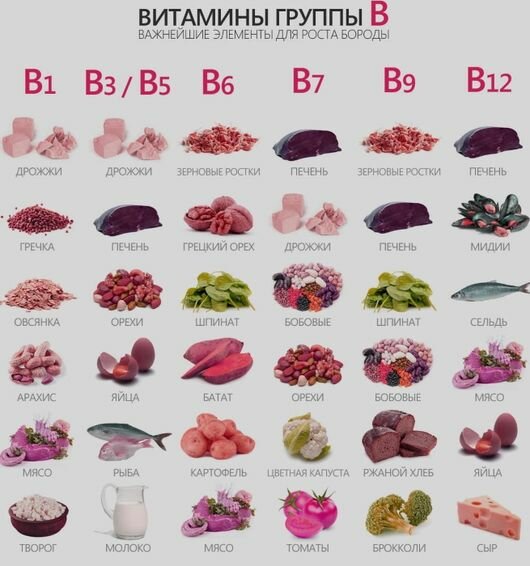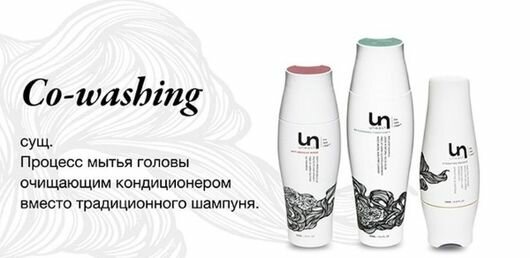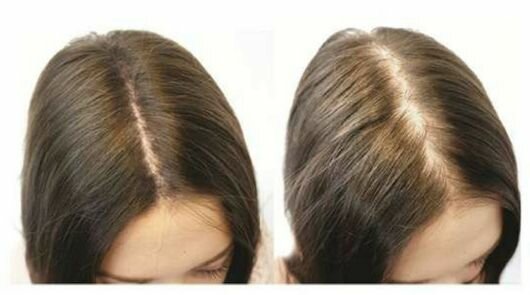Bangs are an easy way to freshen up your hair and give it a personality. Oblique smooth or torn strands on the face on long hair emphasize the appearance and add completeness to the image. Photos of current haircuts will allow you to choose the appropriate hairstyle for the type of hair and face shape.
- What form of face goes oblique bangs
- The choice of the length of the bangs depending on the shape of the face
- Types of oblique bangs: lacerated, long
- Common mistakes when cutting oblique bangs
- Rules for combining a slanting bang with an image
- The technique of cutting torn oblique bangs
- How to make a short oblique bangs at home
- Self-cutting a long oblique bangs
- Sideways bangs
- Cascade with bangs
- Tips of stylists: how to style oblique bangs
- Video about oblique bangs
What form of face goes oblique bangs
The advantage of oblique bangs should be given to girls with massive facial features. Suitable face shapes – square, rectangle, oval.
A correctly selected look of a bang can make a face more harmonious and balance its features:
- Thick bangs to the middle of the eyebrows, laid to one side, visually softens the sharp cheekbones and massive jaw. It is important that the tip line blends smoothly with the total length of the hair.
- Elongated milled bangs up to the jaw line and below mask full cheeks.
- Lying sideways and trimmed with a sliding slice of bangs of medium density and length to the eyes narrows a wide forehead. In this case, the emphasis is shifted to the lower part of the face.
- A short French bang or “hedgehog” is milled and laid vertically. Fits an oval-shaped face with small neat features.
- Thick bangs with sharp edges visually narrow the elongated face.
The bangs with straight hair look perfect, but combed on the side its types allow for light whirls.
The choice of the length of the bangs depending on the shape of the face
Oblique bangs on long hair, photo examples of which are offered below, will help to try on the desired option for your face type. 

The choice of length depending on the shape of the face:
- Oval. The reference shape of the face to which others seek to bring closer. Short torn bangs and rare elongated ones are suitable here.
- Square. The face is characterized by a wide forehead and jaw. Compensates angular cheekbones volumetric bangs up to the middle of the eyebrows, laid to one side. The second option is an elongated rare bangs to the line of the chin. With such a haircut, you can easily change the styling and position of the parting.
- Rectangular The face is similar to a square shape, but with a high forehead. Sloppy graduated bangs fit below eyebrows. The strands should not open the forehead much and be too thick.
-
Trapezoid. The shape of the face is characterized by a wide jaw and a narrow forehead. This type is suitable for oblique bangs with a thinning or sliding slice. They should be light and voluminous at the roots, smoothly pouring into the total mass of hair. Permissible length of bangs to the temples and above.


- Heart or triangle. This face shape is characterized by a sharp transition from protruding cheekbones to an acute chin. Variants of ragged, arched bangs with a sliding slice are acceptable, but they must be accompanied by a side oblique parting.
- Round. Visually narrow such a face elongated asymmetric bangs up to the chin.
You should also pay attention to how the front strands will be combined with the main haircut and stacked. Bangs of any complexity need to be trimmed in a timely manner.



 Do not miss the most popular article in the rubric:
Do not miss the most popular article in the rubric: Fashionable hair colors this year. Photos and trends of hairdressing.
Types of oblique bangs: lacerated, long
Oblique bangs on long hair (photos are presented later in the article) always turn out different, because the master chooses the cut and location of the strands, taking into account many factors. First of all, it is the type of hair and its length. 

Bangs should be relevant and concisely complete the hairstyle.
Types of oblique bangs:
-
Classical It is cut with a sliding cut and up to the middle of the eyebrows. It is worn with medium-length hair trimmed with a classic cascade, ladder, elongated Bob.


- Graduated. It is carried out with a haircut of strands in two layers, in which the bangs become rarer and more voluminous at the roots of the hair. Suitable for multilevel haircuts, for example, an elongated bean, a ladder for all curls and graduation along the entire length.
- Volumetric The length to the temples of the bangs is laid to one side and flows into the total length. Suitable for rare thin hair. It is especially well combined with an elongated bean and is suitable for any type of cut of the ends of the hair: straight, arched, “fox tail”.
- Torn. It is similar to graduation, but the strands here are milled into one layer. It is important to correctly select the length and depth of thinning. This type of haircut is back in fashion and combines equally well with any length, hair type and styling.
- Arcuate . This option involves a sideways thick bang. Suitable for elongated bob, as well as curly fluffy hair. The edges of the bangs should be clear.
-
Elongated. Long front rare strands cover the temples, leaving the forehead almost completely open. Hair thinning allows such a bang to make the hair more voluminous and light. It is applied on thin long hair with any haircut, except for Bob haircut.


The appearance of each hairstyle can combine the proposed options.
Common mistakes when cutting oblique bangs
A slanting bang on long hair, the photo of which the master will try to repeat, may fail. The reason for this is the lack of an individual approach to different types of hair.
Before trying to implement the desired image, you should familiarize yourself with the common mistakes in cutting technology:
- Wet hair. Wet curls are elastic and can stretch up to a inch in length. Therefore, the dried bangs will be shorter. In addition, the hair can curl during the cutting process and it is important to control their natural styling by changing the cutting method. Additional repeated drying and stacking adversely affect the condition of the fresh cut. To bring the trimmed bangs closer to the finished one, you need to wash your hair the day before the procedure, and if necessary, spray the strands with a spray or varnish for fixing.
- Wrong parting. Choosing the top of the bangs on the central parting can make wearing a future haircut uncomfortable. The bangs will be difficult to fit, and long strands fall into her zone. To maintain the position of the front strands, you need to select the top based on the natural parting. Then an isosceles triangle is separated from it, the bangs are stretched and released for natural laying.
- Optimum length and width. When doing the bangs for t
he first time, it’s best not to cut too much, but rather to prefer elongated options. The width of the bangs should not go beyond the temporal cavities.



 Do not miss the most popular article in the rubric:
Do not miss the most popular article in the rubric: Fashionable bob haircut for medium hair. Photo, front and rear view.
Rules for combining a slanting bang with an image
A slanting bang on long hair (photos are attached below) successfully complements the image of any complexity:
- Ultra-short torn bangs make the look original, add a touch of playfulness and negligence. Suitable for young women. Universal for any hairstyles.


- Torn, graded, elongated and medium-long bangs are suitable for all ages. They go well with a bob haircut and a multi-level cut. Such bangs are worn with fashionable sloppy styling, light waves, disheveled bunches and tails, texture curls. They make the look more romantic and visually rejuvenate the owner.
- Trimmed with a sliding slice, bangs of any length are suitable for creating an elegant and concise look. They complement smooth styling, emphasize well-groomed hair. A great solution for those who wear an elongated bean, a classic cascade or long straight curls.
-
Thick bangs with clear edges are suitable for those who want to hide age-related changes, while getting a concise middle between elegance and romance. Combine with any hairstyle, but look better with fluffy, slightly curled curls.


Choosing the right option, you should focus on your own taste and preferences. The main criterion for a haircut is an expression of the character of the owner.
The technique of cutting torn oblique bangs
Torn bangs – a difficult option. The difficulty is to make the torn strand as natural as possible.
In salon conditions, a ragged cut is achieved by a clear technology:
- The wizard defines the parting and secures the side strands.
- Moisturizes hair.
- Pulls the leading long strand and makes a zigzag cut.
- Alternately takes the next strand and combines with the previous one. Makes each new strand shorter by one step.
- Separates each curl 0. 2’8 – 0’4 inch wide, stretches perpendicular to the face and cuts off the formed triangles at the ends of the strands.
- Dries and puts bangs.
The procedure scheme is quite simple in the hands of a specialist and provides a high-quality result.
How to make a short oblique bangs at home
Oblique bangs on long hair can be done independently. First you need to familiarize yourself with the photo, video or text instructions.
For the procedure itself, you will need the following tools:
- hairbrush;


- ordinary scissors;
- thinning scissors (if possible);
- hair dryer;
- round brush;
- mirror;
- hair clips.
By following the steps below, you can cut the bangs without errors and difficulties:
- It is necessary to highlight the parting line focusing on its natural position.
- In the parting, a point is highlighted that will serve as the top of the bangs.
- From the top of the parting to the face, you need to separate the front strands along the diagonals so that the resulting billet for the bangs looks like a triangle. The width of the bangs should not go beyond the line of the temporal part from two sides. Hair that will interfere with stabbing and pulling back.
- Moisten strands with water and blow dry slightly. If the haircut is carried out for the first time, the procedure should be done on dry hair.
- Comb the bangs on the opposite side from the extension.
- By pulling and holding the hair with your fingers at the desired length, cut the hair. The cutting angle should be horizontal with increasing angle in the direction where the strand was pulled.
- Comb the bangs in the opposite direction, dry, lay.

 The second option for cutting involves pulling the strand vertically down. The lock is turned over and cut horizontally in a straight line.
The second option for cutting involves pulling the strand vertically down. The lock is turned over and cut horizontally in a straight line.
To thin out the bangs, you need to capture each part of it in turn. Holding the scissors in an upright position, trim the ends of the hair at small intervals along the width of the strand. The depth of the scissors when cutting should not exceed 0’4 inch of the height of the bangs. If there are scissors for thinning, then you can perform a horizontal cut, adhering to the same technique.
To get a quality result, it is better to adhere to such recommendations:
- you should leave the bang length in stock, then the result can be adjusted by thinning;
- you need to cut only with the tips of scissors;
- Before cutting and in the process, it is worth releasing the strand to focus on its natural position and to correct the result.
The quality of the haircut and the condition of the curls largely depends on the sharpness of the scissors, so it is better to buy professional tools.
Self-cutting a long oblique bangs
The elongated slanting fringe is characterized in that it has a sharper sliding slice, which is more difficult to achieve. At home, getting this haircut by the slip method is quite difficult. 

Therefore, it is better to adhere to the following instructions:
- Select the parting and divide the hair into two parts. The large width of the strand should be taken from the side in which the bangs will be lengthened.
- Extend a wide strand vertically down through your fingers, stopping at the place where the shortest part of the bangs will be. The length is approximately at the temple level.
- Pull the strand to the side where the smallest part of the bangs lies, without releasing the fingers.
- Hold the lock to put your hand in an upright position.
- Trim the stretched part of the hair vertically.
- Repeat the procedure on the smaller part of the strand.
In the process, it is important to understand that the higher the curl is raised on the opposite side, the more sliding the cut will be. It is worth following the instructions having in stock a significant part of the extra length and gradually repeat the steps until the desired result is obtained.
Sideways bangs
A slanting bang on long hair, the photo of which can be seen below, is simple to perform.
To do the bangs on one side yourself, you will need sharp scissors and a strict following of the instructions below:
- Select a part and grab a strand.
- Grip hair between fingers and stretch down.


- Mark the length just below the original (this will be the shortest part).
- Pull the curl in the opposite direction from the future bangs direction.
- Cut the strand diagonally by 45 degrees (the angle increases in the direction where the hair was pulled).
- Repeat as necessary. As the angle decreases, the bangs cut will be straighter.
- Lay the resulting strand to one side.


If necessary, bangs can be profiled. It is better to thin out the ends of the hair while pulling the strand.
Cascade with bangs
The cascade is performed on wet strands with their division into zones. It is necessary to stock up on clamps and a flat comb with frequent teeth.
Next, follow the instructions:
- Wet the hair and distribute it into square-shaped zones, comb and fasten the strands in each part with clips or elastic bands: make one upper central (parietal zone), two zones on the left and right side of the head.


- Further, moving to the occipital part, select two zones on the left and right sides.
- To comb and pull up a lock in the parietal zone, cut off the desired length with a horizontal cut in a straight line.
- Divide the curls on the occipital part with a vertical parting into small parts, pull each up to the central (parietal) strand and cut off so that both parts are at the same level. Occipital strands may be longer than parietal.
- Pull the remaining areas up and cut off at the same level with the hair in the parietal part.
If you add a separate zone of the crown to such a haircut, the hairstyle will be completely different. Next, the haircut is adjusted in dried form. If necessary, you can trim the oblique elongated bangs.



 Do not miss the most popular article in the rubric:
Do not miss the most popular article in the rubric: Fashionable bob cut for short hair. Photo, front and rear view.
Tips of stylists: how to style oblique bangs
The easiest way to dry styling is to sprinkle the bangs with varnish and put in a comb.
However, different types of strands have their own styling methods:
- Torn bangs of any length suggest sloppy styling. A small amount of mousse needs to moisten the hair, while slightly ruffling them with your fingers and blow-drying without a comb.
- Smooth bangs are dried with a round comb and hair dryer. The strands are scrolled with a comb and blown with cold air from a hair dryer in the direction from the roots to the ends of the hair.
Do not be zealous with fixing agents. Drops or peas of any styling gel or mousse are enough to prevent the bangs from looking dirty and sticky. It is advisable to give preference in favor of sprays, especially for oily hair, or curls that poorly hold the volume.
The versatility of a slanting bangs on long hair makes this option a haircut classic. In confirmation of this, a gallery of pictures with examples on which this detail equips any appearance with femininity and romantic mystery. This method is perfect for those who want to quickly and efficiently revive any boring haircut.
Video about oblique bangs
Fashion haircuts with oblique bangs:
How to cut oblique bangs yourself:





